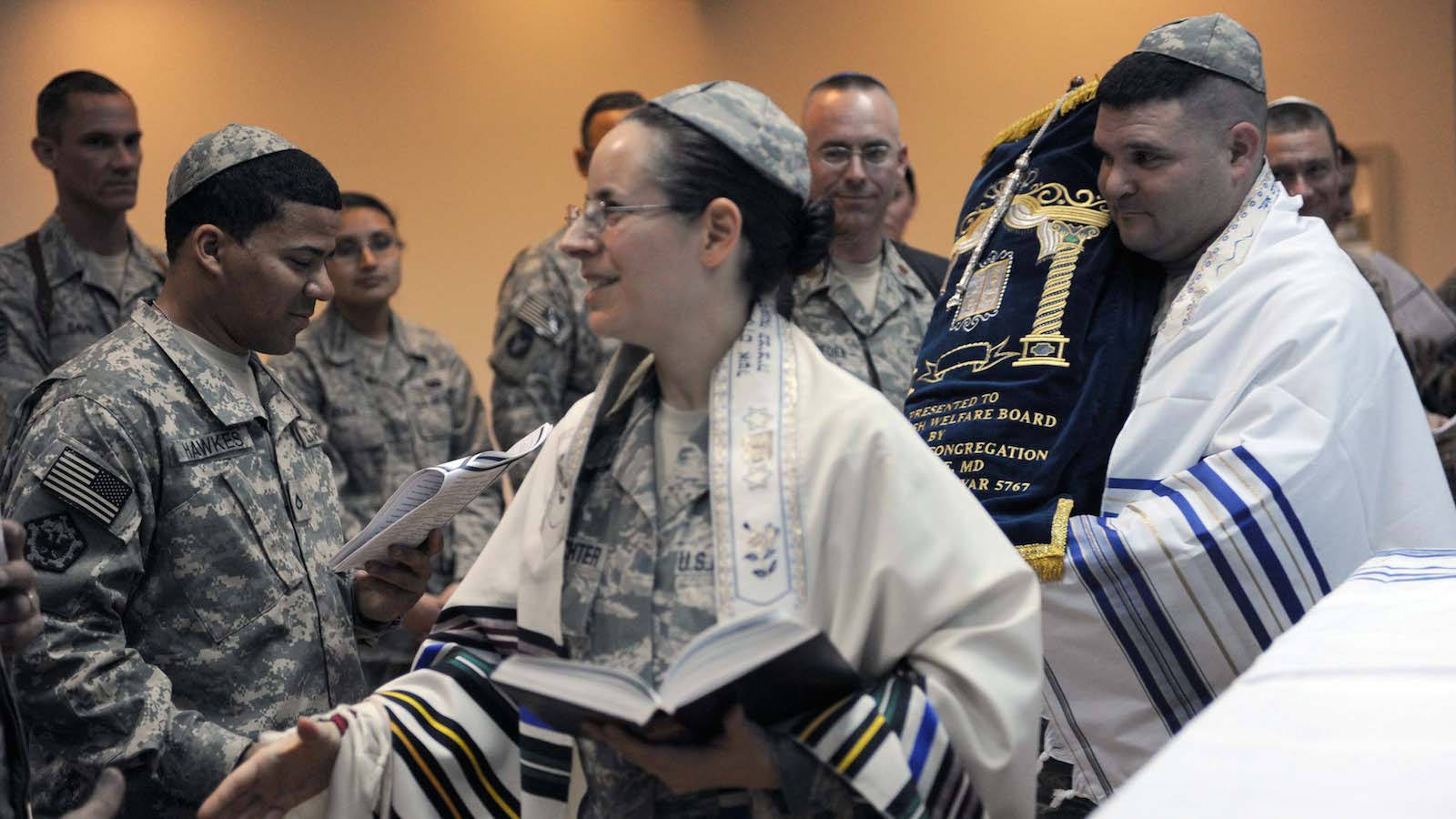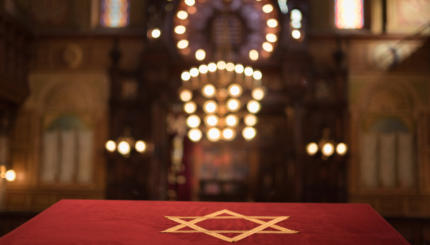If there’s any constant in Jewish life, aside from Torah itself, it may seem to be the role of the rabbi. Spiritual leaders in a lineage stretching back to the earliest days of Judaism as we know it, rabbis have always been the teachers and scholars who instill in Jews knowledge and commitment and ensure the continuity of Judaism itself. A long beard, a head buried in a book or peering out from the bimah, he — for, through most of history, they were only men — is the face of Judaism, the embodiment of Torah and love of God.
A job description that never changes, right?
Not so fast.
A Juggling Act
It’s true that these traditional responsibilities remain at the heart of a rabbi’s job, but as with so much these days, the life of a rabbi has become a complicated juggling act. He or she–since all but the Orthodox movement ordain women today–must also play the role of politician, marketing expert, administrator, fundraiser, salesperson, and financial-management guru, as well as personal spiritual guide, therapist, and interfaith ambassador.
With your help, My Jewish Learning can provide endless opportunities for learning, connection and discovery.
Even the traditional clerical roles–teaching and preaching–have grown more complex. “Paternalistic,” “lone-rangers,” and “hierarchical” are some of the words scholars today use to describe the way rabbis worked under the former model of religious leadership.
These days, however, unquestioned authority does not pass muster. A growing number of American Jews no longer see traditions, organizations, institutions, or even highly certified leaders as inherent sources of authority. They refuse to be bound by categories of the past–such as denominational labels–and instead seek their own personal spiritual paths, drawing from whatever and wherever they find inspiration.
And while these trends are especially true in the non-Orthodox denominations — Conservative, Reform, Reconstructionist — even some of the most traditionalist, cloistered ultra-Orthodox Jewish communities are affected by them in some, albeit less blatant, ways.
The Spiritual Marketplace
Part of the individual focus of religion is the blurring of traditional denominational lines and boundaries. Conservative and Reform synagogues may both have instruments on Shabbat, while Reform services are employing more Hebrew than in the past.
Moreover, an increasing number of synagogues and minyanim are cropping up that intentionally shun denominational membership. Even among the ultra-Orthodox, where allegiance to tradition and fidelity to rabbinic leadership is the highest, modern life has affected the rabbinate, in part thanks to the Internet, which has opened every rabbi’s decisions or proclamations to be dissected, discussed, and opposed far beyond the cloistered walls of his own community.
Some have referred to this new reality as the “religious marketplace,” where individuals go “shopping” for the faith or denomination that fits them best–or, more likely, the various pieces of different faiths or denominations that they then cobble together into their own individualized religious practice, often with little regard for the traditions or denominations in which they were raised.
In this “consumerist” model, rabbis must be able to lead their congregants along a highly individualized spiritual path, guiding them without being too heavy-handed, leading congregants to their own conclusions about belief and practice while keeping them in the fold.
At the same time, many Jews’ reduced sense of obligation, especially among the non-Orthodox, means that rabbis are often competing with kids’ extracurricular activities, stressed-out parents’ relaxation time, and any number of other pursuits that eat away at Americans’ shrinking amount of down time. And rabbis must do this while also handling the day-to-day demands of congregations, which continue to function as spiritual homes, community centers, schools, and safety nets.
Transforming Seminary
To prepare rabbis for this changed world, rabbinical seminaries across the denominational spectrum are stressing as never before the role of rabbi as professional. Today’s rabbinical students are taking classes in nonprofit management and professional development. They are focusing on the personal spiritual journey through meetings with mentors and internships in hospitals and other pastoral care settings, and engaging in interfaith dialogue with their counterparts at Christian and other seminaries. And in a major departure from past rabbinic training, these students are learning how to lead a new, more member-centered congregational community.
In the past, rabbinical schools were places for serious Jewish learning, where students focused on mastering texts rather than how to fill the rabbi’s role. And while traditional learning may retain its central place in seminaries, rabbinical schools today stress like never before the practical aspects of being a rabbi, including delivering sermons or divrei Torah, often aided at least in part by acting or public-speaking coaches; pastoral counseling, for which trained clinicians are tapped; and financial and organizational management, drawing on teachers from the business world.
This change is more obvious in the non-Orthodox seminaries, but it is evident even at some Orthodox schools, where text learning retains its centrality even as these new roles are emphasized.
As a result, today’s rabbis are accomplishing more and more in their communities through lay people’s involvement and empowerment–shared learning and spiritual experiences rather than top-down rabbinic authority. More shuls are looking to lay leaders for decision making, offering small-group services that cater to different needs in the community, or even restructuring their sanctuaries to reduce the divide between rabbi and congregation.
The Upside
The loss of rabbinic authority and emphasis on personal spirituality may make the job harder, but it also means that congregants care–deeply–and are highly engaged in religious learning and serious about their practice. This reduces the divide that may have existed between rabbi and congregant in the past, when rabbis often felt they were leading a passive congregation not looking for personal transformation.
And while the Internet may open up every sermon and rabbinic decision to dissection and dissent, it also means that any rabbi can find followers and influence people around the globe to an unprecedented degree, by posting sermons, divrei Torah, holding classes, or otherwise engaging in rabbinic activities online. Interestingly, Orthodox rabbis, such as those affiliated with outreach-centered groups like Chabad and Aish HaTorah, have been most adept at capitalizing on the opportunities opened up by the Internet.
The Jewish community has also seen a newfound emphasis on education in recent years, opening up new professional opportunities for rabbis to reach people in ways other than from the synagogue pulpit. Day schools are proliferating, congregations are hiring informal educators and family educators, and even communal or social-action organizations–like the disaster-relief group American Jewish World Service–are running educational programs often staffed by rabbis.
The challenges, however, remain great. The potential for burnout is massive, as rabbis work harder to retain congregants’ interest and lead them in highly individualized paths, while also, in many cases, running day-to-day operations for the synagogue, playing a role in budgeting and fund-raising, leading and/or teaching in the Hebrew School, and, of course, maintaining traditional roles of counselor and lifecycle-ceremony officiant.
But perhaps the greatest challenge to today’s rabbi is the emphasis on individual choice at the heart of the spiritual marketplace model. Empowering each individual congregant, the rabbi runs the risk of becoming a mere cheerleader and empowerment coach–the polar opposite of the previous, hierarchical model of the rabbinate.
The balance, of course, is to be found in the middle, where the best of rabbis lead congregants on their individual spiritual paths while skillfully setting the tone and guiding them in a specific direction. It’s a tight-rope act, but one that few rabbis today can escape.
Torah
Pronunced: TORE-uh, Origin: Hebrew, the Five Books of Moses.
bimah
Pronounced: BEE-muh, Origin: Hebrew, literally "stage," this is the raised platform in a synagogue from which services are led and the the Torah is read.



